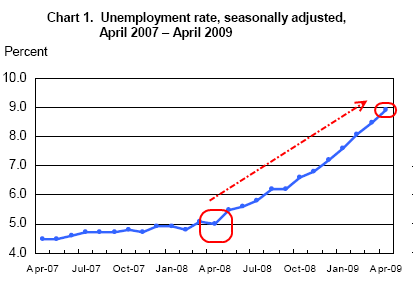News > Politics > Why You Hatin’ On Babylon?...
Our usury laws are insane. Our usury laws drove us into debt, sped up the loss of our manufacturing base and have directly led to the murder of the middle class. And it’s only going to get worse. The looming credit card crisis will be the next shoe to drop and with deflation a serious threat, shockingly heinous and fluctuating interest rates will make it impossible for many to get by. Even ancient Babylon had laws against the shit we allow lenders to get away with.
Usury:
1: interest
2: the lending of money with an interest charge for its use, especially: the lending of money at exorbitant interest rates.
3: an unconscionable or exorbitant rate or amount of interest; specifically: interest in excess of a legal rate charged to a borrower for the use of money.
Quite a few successful ancient empires considered usury to be worse than murder and it was punished accordingly. We, because we are an incredibly wise country, decided to toss out centuries of law and tradition. First in the early 1900’s, we began to gut our usury laws and then under Jimmy Carter they were fully disemboweled. It’s not like we didn’t have a time period to look back on and see what would happen.
800-600 B.C.
The Greeks at first regulate interest, and then deregulate it. After deregulation, there was so much unregulated debt that Athenians were sold into slavery and threatened revolt.
Slavery. Totally different from working endless hours at a job just to pay back a bank. Well, I say pay back a bank, but the amount borrowed has already been paid off tenfold. In reality, the average Joe in debt is paying off interest and more interest and more interest. It’s debt slavery and America is kicking ass.
Old Testament
The Prophet Ezekiel includes usury in a list of “abominable things,” along with rape, murder, robbery and idolatry. Ezekiel 18:19-13.
1750 B.C.
The Code of Hammurabi regulates the interest that can be charged on a loan. Historical records indicate that many loans were made below the legal limit.
What Hammurabi and Ezekiel knew, Americans certainly do not. It’s pretty simple. If you create a debt society by allowing insane interest rates, capital is removed from manufacturing and small business. It all gets pumped into the banks and everything is then out of balance. And it’s not just the money, the top minds head into the financial world, spurning the areas where society needs them, like manufacturing. Eventually it all collapses on itself. Welcome to America.
443 B.C.
The Romans adopt the “Twelve Tables” and cap interest at 8 1/3%
America has become a bunch of clowns scraping by to pay off the financial sector. We are waiters, Wal-mart workers, gas station attendants and Starbucks coffee makers, but overall, the “Financial services sector” employs most Americans directly or indirectly. We have a society built on loans. We are eating ourselves. First we started with our hands, then our arms, our legs and now we are getting into the organs. I just ate my kidneys. Not bad, I suggest grilling.
11th century
In England, the taking of any interest at all is punishable by taking the usurer’s land and chattels.
Now that we have gotten rid of laborers and turned unions into our society’s villains, we are obviously much better off. In 2002 and 2003, the financial sector took in more than "
40% of the profits that accrued to US corporations." That’s good right? In 1988 it was half that – because interest rates were relatively normal.
...
Medieval Roman Law
Usurer’s are fined 4X the amount taken, while robbery is penalized at twice the amount taken.
The '70s are when we decided to toss our usury laws aside and rape each other at will. The big case that turned everything upside down was Marquette National Bank v. First of Omaha Service Corp. in 1978. Before that horrible Supreme Court decision, states could set their own interest rate caps. The court ruled that banks could set their rates based on the state “where the bank is located.” No mas. Good bye interest rates under 10%. It was the wild west as far as credit card companies were concerned and we were all victims about to be fed to the pigs in Deadwood.
1570
During the Reign of Queen Elizabeth, interest rates in England are limited to under 10%. This law lasts until 1854.
The bestest thing of all is how the banks weren’t satisfied with insane interest rates that would have led to their execution back in the day. No, they also had to go with huge overdraft fees, ATM fees, transfer fees, and on and on. And we let them. ...
After 1776 All of the States in the Union adopt a general usury. Most states set the interest limit at 6%....
Next week, I’ll cover payday loans, which is actually 100 times worse than credit cards.
